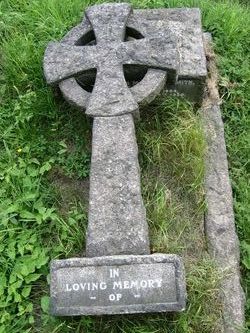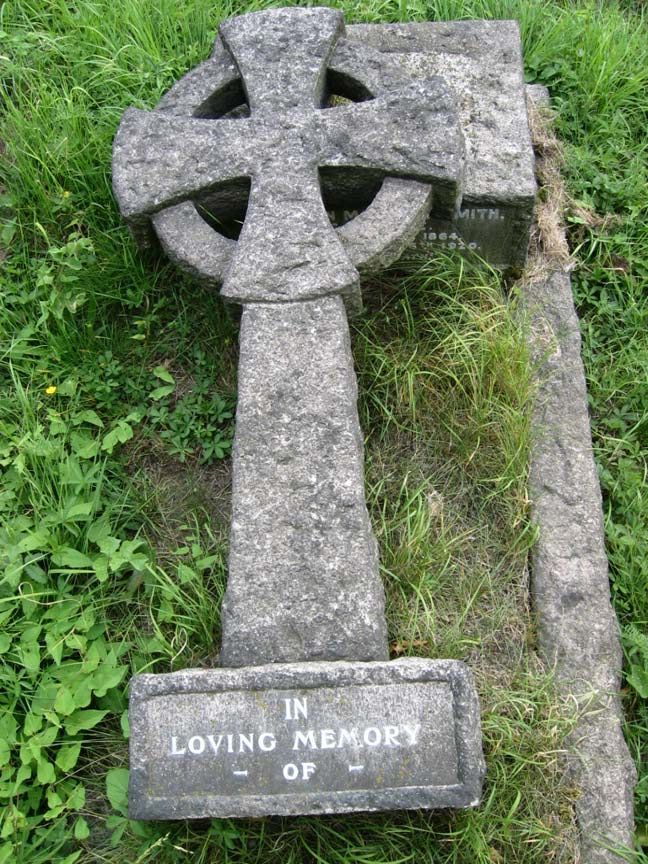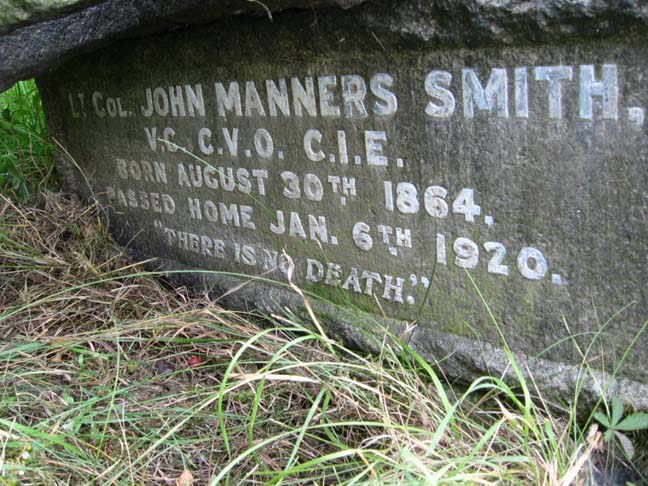"For his conspicuous bravery when leading the storming party at the attack and capture of the strong position occupied by the enemy near Nilt, in the Hunza-Nagar Country, on the 20th December, 1891. The position was, owing to the nature of the country, an extremely strong one, and had barred the advance of the force for seventeen days. It was eventually forced by a small party of 50 rifles, with another of equal strength in support. The first of these parties was under the command of Lieutenant Smith, and it was entirely owing to his splended leading, and the coolness, combined with dash, he displayed while doing so, that a success was obtained. For nearly four hours, on the face of a cliff which was almost precipitous, he steadily moved his handful of men from point to point, as the difficulties of the ground and showers of stones from above gave him an opportunity, and during the whole of this time he was in such a position as to be unable to defend himself from any attack the enemy might choose to make. He was the first man to reach the summit, within a few yards of one of the enemy's sungars, which was immediately rushed, Lieutenant Smith pistolling the first man". He was one of 3 to be awarded the Victoria Cross during the campaign. Between 1889 and 1918, he held political appointments in Kashmir, Bundhelkand, Baluchistan, Rajputana, Central India and Nepal. He was Chief Commissioner of Ajmer-Merwara from 1918 to 1919.
He was promoted to Major on 10 Jul 1901. He achieved the rank of lieutenant colonel before he retired from the army. He was appointed as a Companion, Order of the Indian Empire ( CIE ) and a Commander, Royal Victorian Order ( CVO ). His Victoria Cross is displayed at The Gurkha Museum in Winchester, Hampshire, England. He was buried in Kensal Green Cemetery.
He is also commemorated on the Indian Army WW1 memorial in the Royal Memorial Chapel, RMA Sandhurst, Camberley, Surrey Heath Borough, Surrey, England.
Cenotaph here
"For his conspicuous bravery when leading the storming party at the attack and capture of the strong position occupied by the enemy near Nilt, in the Hunza-Nagar Country, on the 20th December, 1891. The position was, owing to the nature of the country, an extremely strong one, and had barred the advance of the force for seventeen days. It was eventually forced by a small party of 50 rifles, with another of equal strength in support. The first of these parties was under the command of Lieutenant Smith, and it was entirely owing to his splended leading, and the coolness, combined with dash, he displayed while doing so, that a success was obtained. For nearly four hours, on the face of a cliff which was almost precipitous, he steadily moved his handful of men from point to point, as the difficulties of the ground and showers of stones from above gave him an opportunity, and during the whole of this time he was in such a position as to be unable to defend himself from any attack the enemy might choose to make. He was the first man to reach the summit, within a few yards of one of the enemy's sungars, which was immediately rushed, Lieutenant Smith pistolling the first man". He was one of 3 to be awarded the Victoria Cross during the campaign. Between 1889 and 1918, he held political appointments in Kashmir, Bundhelkand, Baluchistan, Rajputana, Central India and Nepal. He was Chief Commissioner of Ajmer-Merwara from 1918 to 1919.
He was promoted to Major on 10 Jul 1901. He achieved the rank of lieutenant colonel before he retired from the army. He was appointed as a Companion, Order of the Indian Empire ( CIE ) and a Commander, Royal Victorian Order ( CVO ). His Victoria Cross is displayed at The Gurkha Museum in Winchester, Hampshire, England. He was buried in Kensal Green Cemetery.
He is also commemorated on the Indian Army WW1 memorial in the Royal Memorial Chapel, RMA Sandhurst, Camberley, Surrey Heath Borough, Surrey, England.
Cenotaph here
Bio by: Peter H
Advertisement




